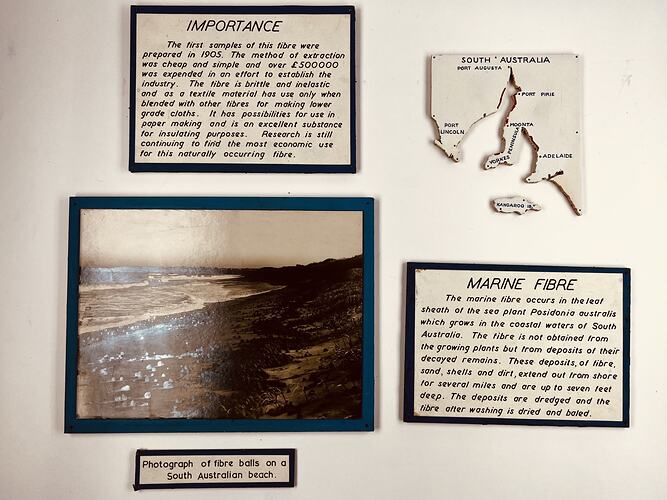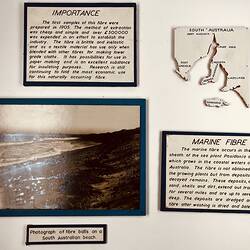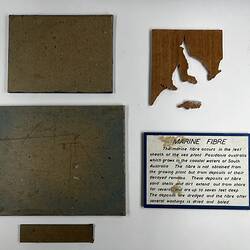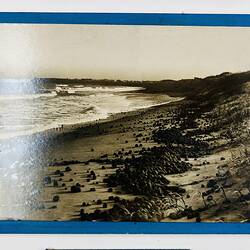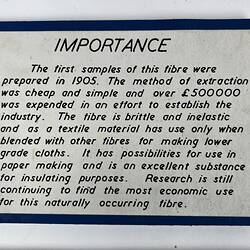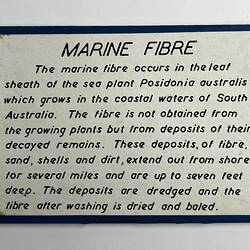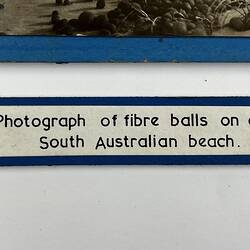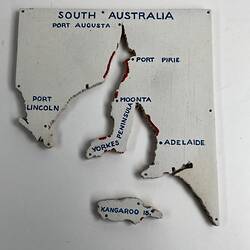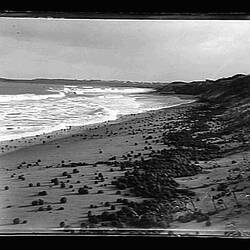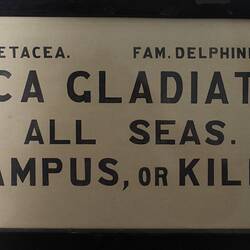Summary
This series of five didactic exhibition labels from the Industrial and Technological Museum explains the process of extracting and processing fibre from the fibre balls, and the decaying remains of the Posidonia australia which forms along the coastal waters of South Australia, circa 1930.
It illustrates the history of extraction from 1905 and the cost of establishing the industry in South Australia. At the time of the display it states that research was still underway to find the most ecnomic use for this natural resource, although five million pounds had already been expended to establish the industry.
Significance
The labels in the Historic Exhibition Labels Collection illustrate the changing styles in didactic interpretation, aesthetics and approaches to audiences engagement throughout the history of Museums Victoria. From the earliest days of the National Museum of Victoria in the mid 1800s through the various incarnations of the Applied Sciences collection through to the amalgamation of all branches into Museums Victoria, the labels chart a course through changes in audience needs and desires and across the museums various sites. There are beautiful examples of hand written nineteenth century labels, some examples of extremely long didactic panels from the early twentieth century and rare and unusual fonts in the mid twentieth century. The collection also illustrates the transition from hand-written labels to the use of typewriter, then Letraset and ultimately printed labels, culminating in the large format digital print room being introduced at Melbourne Museum in 2000.
More Information
-
Collection Names
-
Collecting Areas
Museum History, Information & Communication, Public Life & Institutions
-
Creator
Industrial & Technological Museum, circa 1930
The samples were aquired in 1917 and the images taken in 1909 thus it can be assumed that the display was developed at some point soon after the samples were aquired which corrolated with the museum re-opening with updated dislays. -
Classification
-
Category
-
Discipline
-
Type of item
-
Keywords
Exhibitions, Fibres & Yarns, Museum Display Panels, Museum Exhibitions, Museums, Manufacturing
